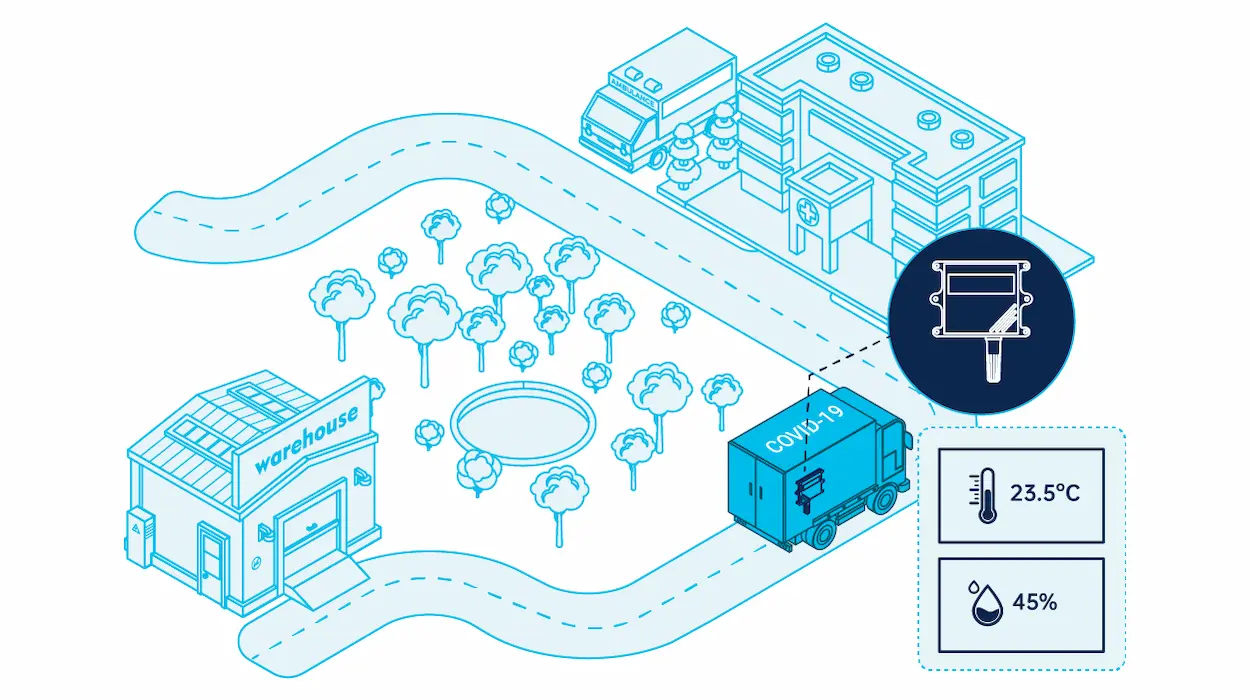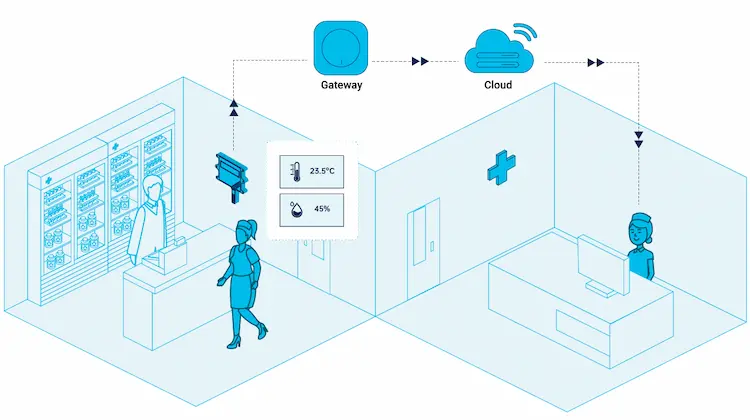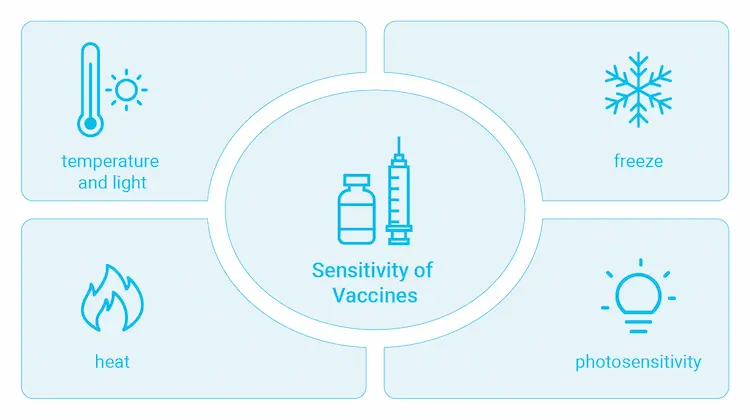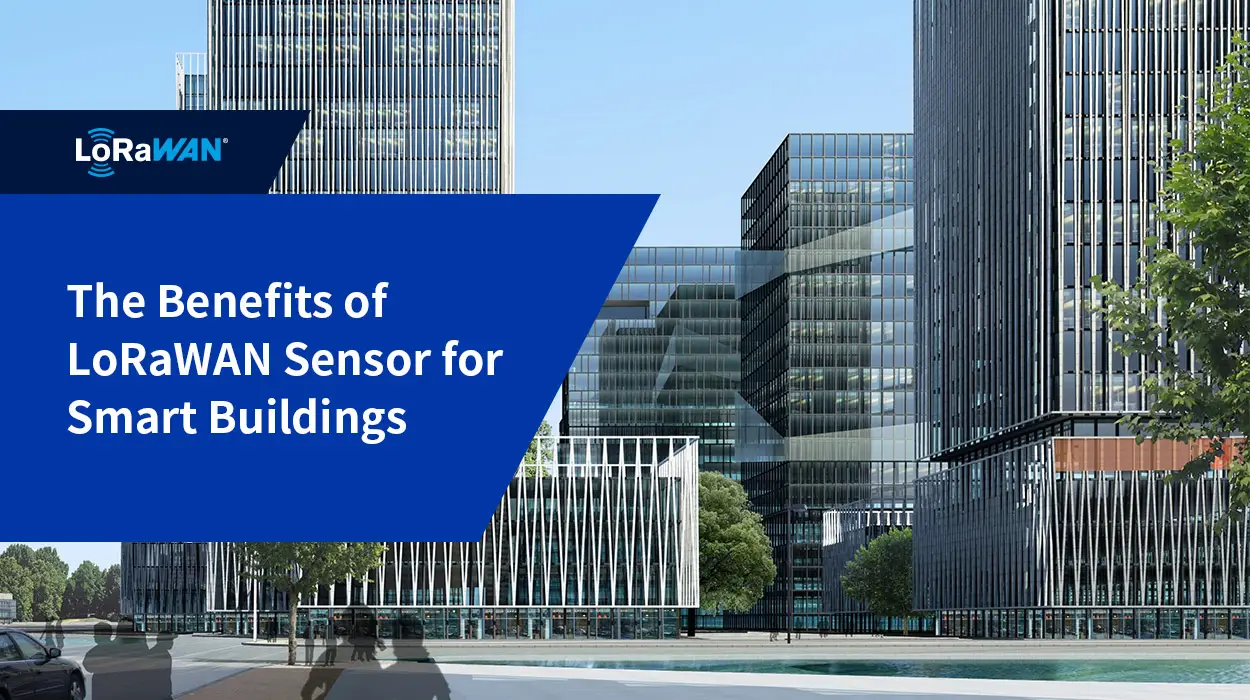LoRaWAN Technology on Vaccine Cold Chain Management
With the continuous distribution and transportation of vaccines in different parts of the world, it is essential to have efficient vaccine storage and a reliable transportation system. At MOKOLoRa, we always ensure that the precious vaccine cold chain management system keeps various vaccines free from contamination.
As vaccines require extraordinary environs, it is at times tricky and challenging to store and transport them. Storing vaccines in a cold chain reduces the risk of spoilage. Moreover, vaccines storages require an absolute temperature value that is only offered and maintained by cold chains. The LoRaWAN technology guarantees that cold chains are effectively working and keeps vaccines as per the specifications required.
As technology is rapidly and ever-changing, it is significant to develop custom solutions to cub all needs. MOKOLoRa makes all these solutions a reality as quickly as possible. Our LoRaWAN technology vaccine cold chain temperature device LW002-TH and LW003-B make the storage and transportation processes more effective. Some benefits of vaccine cold chain management solutions are;
• Temperature and humidity monitoring
• Smart security management
• Location tracking
• Data aggregation
• Sensing ambient lights
Features of MOKOLoRa vaccine temperature monitoring devices
1. Capable of monitoring and recording LoRaWAN technology temperatures overtime
2. Regularly send the collected temperature data to a computer
3. Its temperature display is always active and easy to read
4. It has a low battery indicator
5. Its accuracy is always within +/- 1 degree
6. It has an out-of-range temperatures alarm
7. Well secured with buffered materials
8. Its logging intervals are user-programmable
9. Its memory storage can record up to 4,000 readings
10. It displays the present, minimum, and maximum temperatures
How does the LoRaWAN Technology sensor work on vaccine cold chain management
It is essential to always have real-time visibility into the vaccines surrounding storage conditions. This ascertains that the vaccines are stored under the recommended temperatures. MOKOLoRa has developed gadgets called the LoRaWAN technology vaccine temperature monitoring devices for this solution. The device has a sensor that allows you to easily track the temperature of your vaccine cold chain in real-time using your phone. This end-to-end MOKOLoRa vaccine temperature monitoring device competently tackles all vaccine storage challenges.
LoRaWAN technology vaccine temperature sensors work by tracking and recording real-time information of the vaccine’s storage and distribution conditions. It feeds the user with accurate data essential for making real-time adjustments to the required conditions of storing vaccines. This ascertains the user that the vaccine doses are kept safe and that they maintain their effectiveness.
The main challenge encountered during vaccine distribution
Lately, most medical companies have been trying to develop vaccines at a first-time rate. One major challenge these companies are facing when distributing vaccines logistics is complex. This has been posed as a unique challenge since most vaccines must be kept at extremely low temperatures during storage and distribution processes.
The LoRaWAN technology has a solution to this cold chain management challenge. Its vaccine temperature monitoring device has an operating temperature of between -40 to +60 degrees Celsius and a long-lasting battery life of over 10 years. The LoRaWAN technology vaccine temperature sensors display accurate real-time data and are easily deployable in various environments. All the data captured by the sensor is collected by a LoRaWAN Technology Gateway that provides all-time connectivity. Besides, the gateway has an emergency 4-hours battery backup that prevents any loss of the data collected.
Risk management
Besides poor stock management, vaccines also encounter other risks associated with storage and transportation qualities and exposure to extremely low or high temperatures. One main challenge facing vaccines is exposure to freezing. Nowadays, the exposure of vaccines to sub-zero temperatures is very common, where it occurs mainly during the cold chain transportation stages.
Protection of vaccines
To preserve the quality of vaccines, they must all be protected from extremely low or high temperatures and other environmental risks.
Sensitivity to temperature and light
Everyone who handles any vaccine must be aware of the product’s temperature sensitivities to apply in their program and the product’s recommendable temperatures of storage and distribution. Moreover, they must know how to prevent freezing and exposure to heat and light from safeguarding the vaccines from damages.
Vaccine’s heat sensitivity
Heat exposes the vaccines to the potency of losing their effectiveness. All vaccines are at risk of losing their effectiveness over time. Various types of vaccines have varying heat sensitivities. Moreover, every type of vaccine has a varying heat sensitivity from the other different brands.
Vaccine’s freeze sensitivity
Some vaccines such as Oral Polio Vaccines and Measles Vaccines can tolerate freezing. However, all vaccines that contain aluminum-salt adjuvants can be irreversibly damaged by freezing. When an adjuvant vaccine is frozen, it clumps together, thereby adversely affecting its immunological properties.
Vaccine’s photosensitivity
Some vaccines like BCG, rubella, and measles are exposed to UV rays tend to lose their potency. Due to this, most manufacturers store these vaccines in dark glass-made bottles. As vaccines are sensitive to light, it is important to protect their primary containers from exposure to sunlight and UV-emitting artificial light sources like compact fluorescent tubes. This is particularly significant during the supply chain periphery stage when removing the vaccines from their secondary cartons.
Recommended vaccine storage temperatures
The recommended temperatures of storing vaccines are from +2 to +8 degrees Celsius. Oral Polio Vaccines should be stored in freezers with temperatures ranging from -25 to -15 degrees Celsius to preserve their potency for a longer time. Besides, vaccines packed with their diluent and are freeze-dried should never be frozen.












